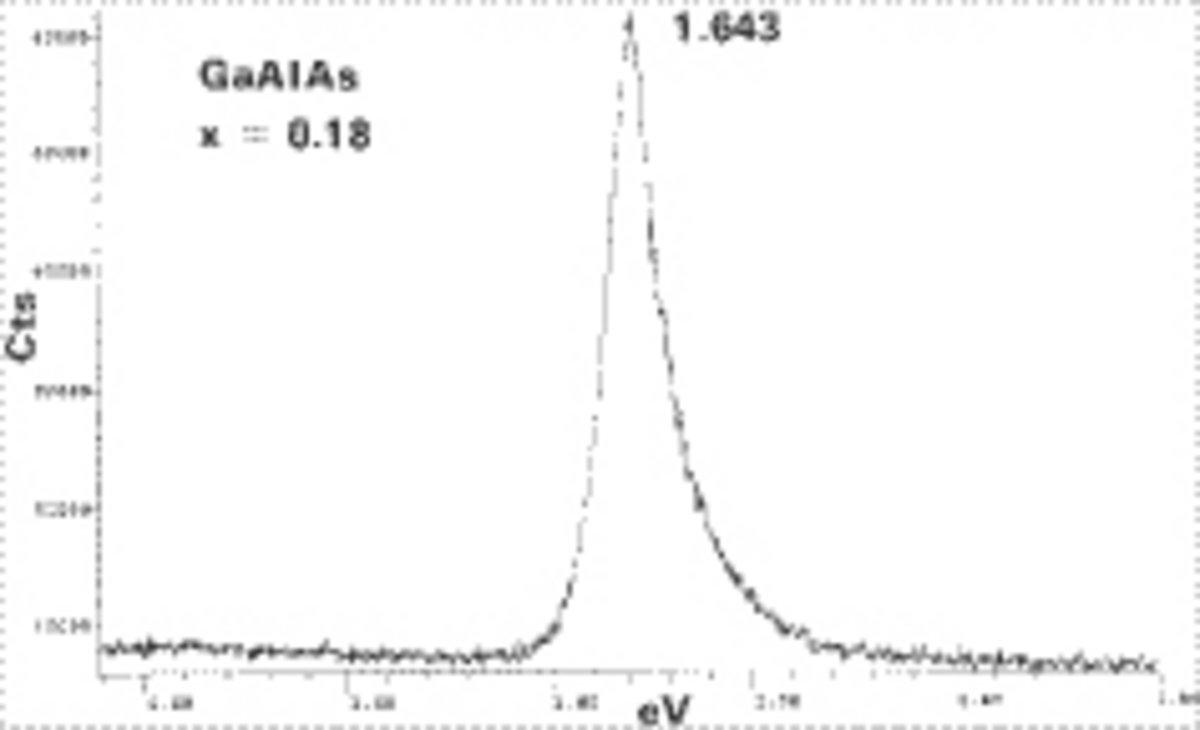
Photoluminescence is the optical emission obtained by photon excitation (usually a laser) and is commonly observed with III-V semiconductor materials. This type of analysis allows non-destructive characterization of semiconductors (material composition, qualitative investigations, etc.
An Argon laser beam is focused on the sample which is located in the center of the sample compartment. If the energy of photons coming from the laser source is greater than the energy gap of the semiconductor, the sample emits photons. These are collected and analyzed with a dual flat field spectrograph. Two detectors are used, a CCD and an InGaAs array. This system allows investigations from 0.75 to 2.4 eV.
We identify the position of one or several photoluminescence lines, and with the help of mathematical models, determine the composition of the material.
Example: GaAlAs sample.
The following expression gives the AlAs composition as a function of the photoluminescence line position (*):
E(x) = 1.424 + 1.247 x (at T = 300K)
with
E(x): line position (in eV units)
x: AlAs composition
Measured line position: 1.643 eV
then x = 0.18 (18% of AlAs)
The two array detectors, CCD and InGaAs, offer high sensitivity and speed. They can both be mounted simultaneously on a Dual Flat Field Spectrograph allowing full characterization of the sample with ease.
Large choice of PMTs, solid state, photoelectric detectors for custom spectroscopy solutions
��������ֱ��제품의 자세한 정보를 원하시면, 아래의 양식에 내용을 입력을 부탁드립니다.

